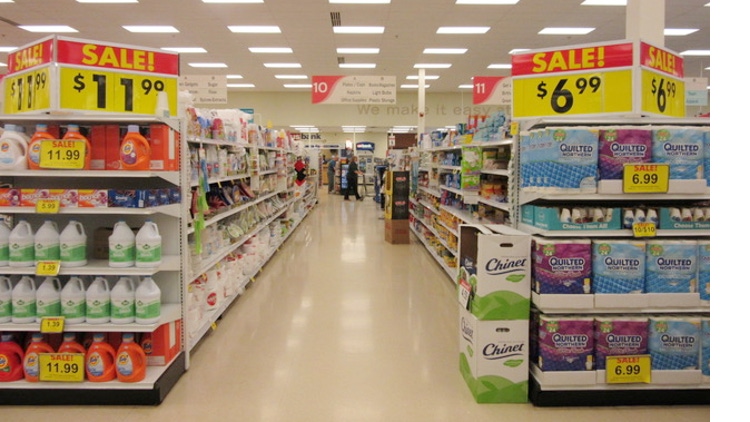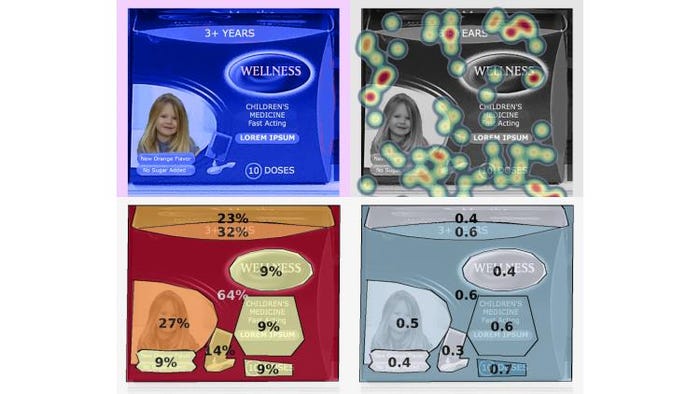8 tips for testing a new or concept package
April 18, 2017

When it comes to testing new packaging concepts or designs, the highest quality research and the most actionable insights must start with a good test. Over the years, we have found that the most successful projects keep a few simple things in mind, especially as it relates to eye tracking tests.
Thinking about the test itself as its own design project is directly related to how successful the test will be. Package tests for new-to-market or concept products are standard practice for new products, new planograms or existing products that are experiencing competition from emerging brands. Package tests can benefit greatly from an eye tracking methodology that allows the client to understand how their packaging design performs in terms of consumer attention in the retail aisle.
Let’s look at some key considerations for fielding research as it relates to package testing.
1. Include all partners in the methodology and design.
Many clients remain guarded about their concepts and it’s easy to see why. In an increasingly competitive consumer marketplace, one doesn’t want to give away too much detail or tip the scales to a rival brand or retailer.
But experience teaches that any partners who are involved in the research design can add invaluable guidance to a project’s overall success. The idea follows—the whole is greater than the sum of its parts.
Experienced personnel have seen the conditions of field research and can inform retail, brand and product managers of elements of the test they might not have thought of. While certainly not specialized in design, a good field technician understands the importance of consistency, how to deal with recruiting and administering tests to respondents, and how to mitigate bias that may be introduced when testing in a real store or a mock-store environment.
If possible, provide digital images of the new or concept packages to everyone involved with the research so that they can be clued in to the test designs prior to performing the research.

From top left, clockwise: (1) We start with a reference image of medication for children in concept packaging. (2) The standard heat map provides insight into hotspots for attention (red is most intense, blue is least intense) to understand where the consumer focuses his/her attention while examining the packaging concept. (3) Each enclosed shape is considered an area of interest (AOI). Darker blue AOIs are viewed for longer on average, while lighter blue AOIs are viewed for less time on average. (4) Darker red AOIs are viewed by a higher percentage of consumers, while lighter red AOIs are viewed by a lower percentage of consumers.
2. Let the shoppers perform their natural shop.
One of the biggest mistakes we can make as researchers is giving the shopper more information than necessary when they’re participating in a research study. When designing a package test methodology that uses eye tracking, of course ensure you’re recruiting the type of shoppers you want for the specific category. In the instructions for the shopper, make sure to ask the shopper to shop the category as they normally would, keeping in mind that this is how to determine if the new or concept package draws attention naturally from shoppers as they approach and shop the categories. Then allow the eye tracking equipment to record their shopping experience and step back and allow the shopper to perform this task as they normally would.
Moderators should refrain from talking to or influencing the shopper in any way during their test shop. Record notes and save the questions for the post-interview. This prevents as much test bias from encouraging the shopper toward the test packaging and allows for a realistic understanding of how the package draws attention.
3. Follow up the natural shop with a forced exposure.
Force expose the shopper to the package and ask them to examine it as if they were considering it for purchase either on the shelf or by asking the shopper to hold up the test or concept packaging.
Forced exposure, as part of a package test, allows for understanding the elements within a package design that draw and hold attention from shoppers while examining the package. From analyzing this part of the eye tracking data, researchers can learn if the important parts of the package are being noticed and what is being ignored. This will go a long way toward understanding how the overall package performs in terms of attention.
4. Review the video with the shopper to find out the “why.”
One of the best parts about eye tracking is that the videos are immediately available for review and can be used as a conversation tool for better understanding the shoppers’ behavior as it pertains to the test package. Reviewing the video with the respondent provides an opportunity to ask the shopper what they were thinking as they shopped and examined the package, as well as what they liked or didn’t like.
Invaluable information can come from these discussions, such as elements of the package people liked or didn’t like, what people thought they noticed about the package (which often differs from what they actually noticed) and gives ideas about clarity of information available to the shopper on the package as well.
5. Script your instructions as much as possible, while remaining consistent.
To ensure that testing conditions remain consistent, the ideal is having a script for interviewers to follow when administering shopping instructions for respondents performing the package test. Some flexibility within the instructions is key to consumer performance (and certainly provide additional explanation as needed), but remaining consistent allows for greater confidence in the research outcomes.
6. Get as much out of your test by leveraging relationships.
When testing a new-to-market product or concept package, make sure to reap the full benefits of often costly in-store or mock-store tests. When doing the test with an eye tracking component, make sure the supplier understands the key areas of interest for testing, including key competitive products and elements of the package. If testing a new package on the shelf, force expose the shopper to both the new and existing packaging to better understand how the new design affects attention on the package.
7. Don’t try to do to too much.
While it’s certainly important to get all the data you can from each test, don’t overdo it. Testing different planograms on shelf, while attempting to test new product packages, or other variables, may over-complicate the analysis.
By introducing multiple variables in a research study, it can be difficult to ascertain causation of any variances noticed in the analysis. Was it the vertical brand blocking that improved product visibility or the new concept packaging? Was it the location on the top shelf or the newly added on-shelf signage that influenced shoppers to interact with products?
While certainly it’s possible to test more than one variable with eye tracking, in a package test, it’s important to understand exactly what is being tested and allow interviewers to follow up with questions to the respondent after the fact.
8. Document everything, and we mean everything.
Something that has saved us headaches over the years has been an insistence on over-documenting the entire test process, everything from where the interviews are set up, to taking photos of the shelf throughout the day to ensure consistency after the fact. A quality camera is a field technician’s best friend and should be insisted upon by all clients doing in-store research, especially at the shelf level.
Prior to arriving in field for the package test, make sure all suppliers have proper documentation of what is being tested, what packages are being tested and what they should look like and other key items to pay attention to. Any and all information the field and analysis teams can have prior to arriving for the test will greatly benefit the outcome.
Package tests are key to understanding the performance of products in retail store environments. In performing a test with eye tracking, it’s important to keep these simple tips in mind while designing the test methodology to help the research team get the most out of the test results.

Kirk Hendrickson, CEO of Eye Faster, a leading provider of shopper research, developed his expertise in eye tracking and shopper research while leading worldwide field operations for EmSense Corp. and product management for MarketTools Inc. He holds a patent for conducting surveys on mobile phones and was twice a finalist for the EXPLOR Awards. Hendrickson holds a Master in Business Administration (MBA) from the Amos Tuck School of Business Administration, Dartmouth College, and a Bachelor of Science (BS) and Master of Science (MS) in Mechanical Engineering from Stanford University.
**************************************************************************************
Learn what it takes to innovate in the packaging space at PackEx Toronto 2017 (May 16-18; Toronto, Ontario, Canada). Register today!
About the Author(s)
You May Also Like


